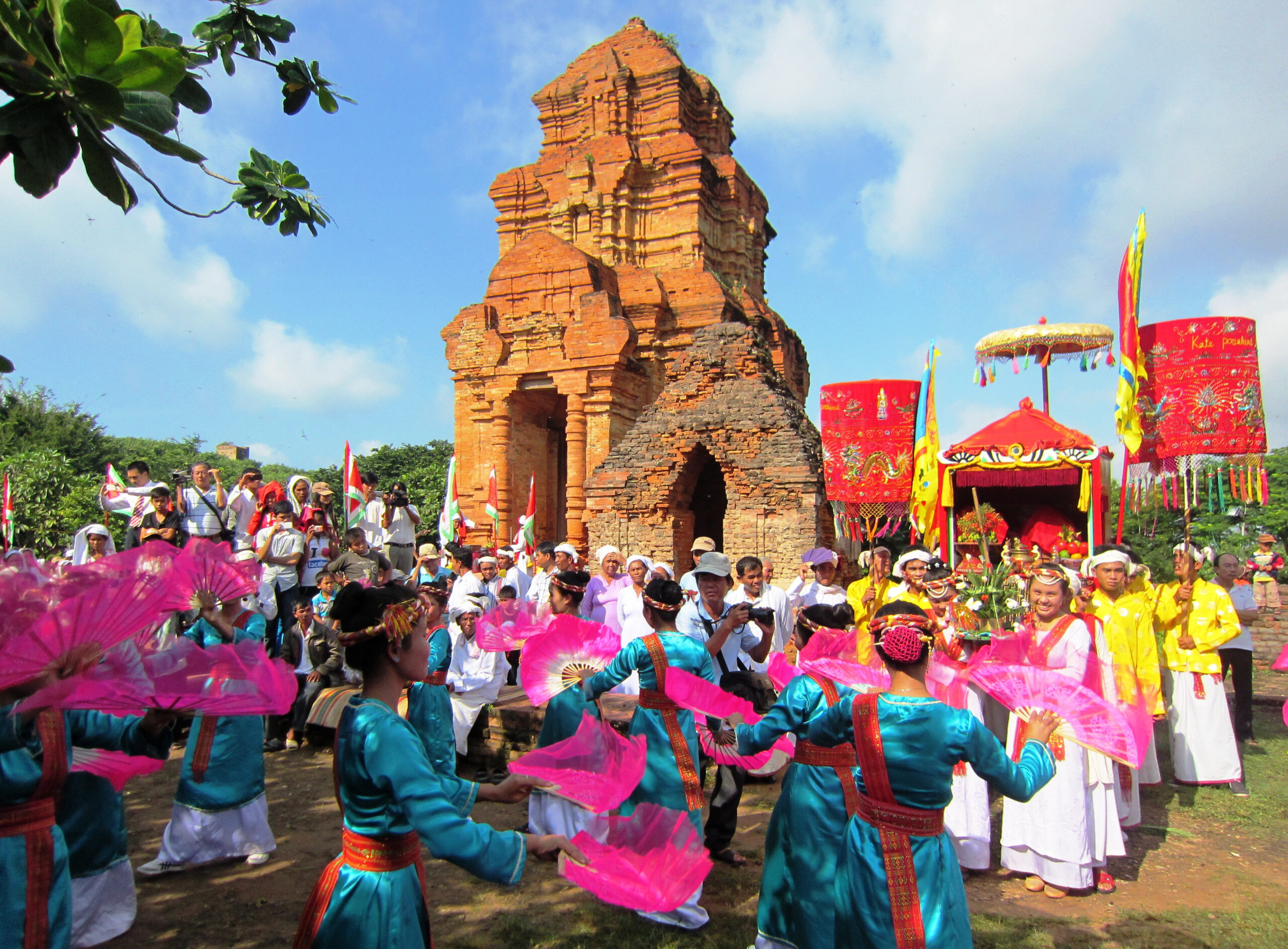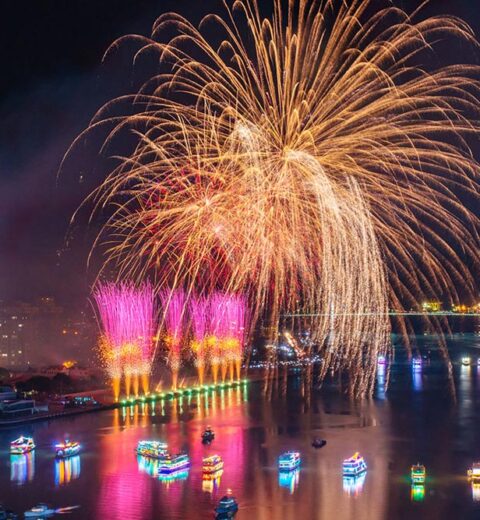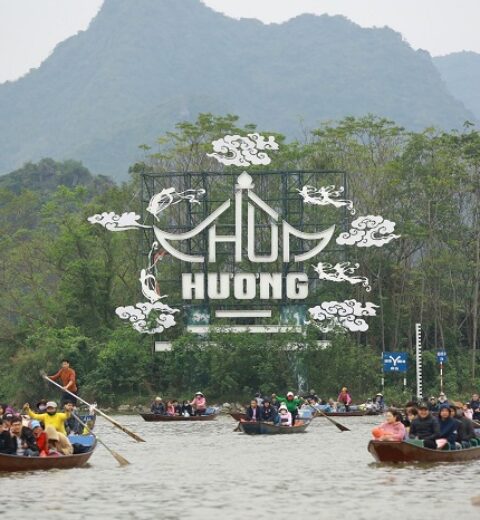Contents
The annual Kate Festival, celebrated at temples and towers, spans 2 or 3 days – marking the last day of 6th month and the first day of 7th month in the Cham calendar. Specifically, the Kate Festival at Po Tam temple in Ham Thuan Bac district is observed on the 15th and 16th of the 9th lunar month each year, aligning with the middle of the 7th month in the Cham calendar (means around October). Following the conclusion of the Kate Festival at the temples and towers, the Cham Brahmins host a subsequent celebration at village houses and continue the festivities with home-based worship. This multifaceted event unfolds at various locations, including temples, towers, village houses, and Cham Brahmin families in Tuy Phong, Bac Binh, Ham Thuan Bac districts, and Phan Thiet city.
In Vietnam, the Kate festival dates from recent years are as follows:
- 2021: 5 – 6 October
- 2022: 23 – 25 October
- 2023: 13 – 14 October
- 2024: … October
Introduction to the Kate Festival of Cham People in Vietnam
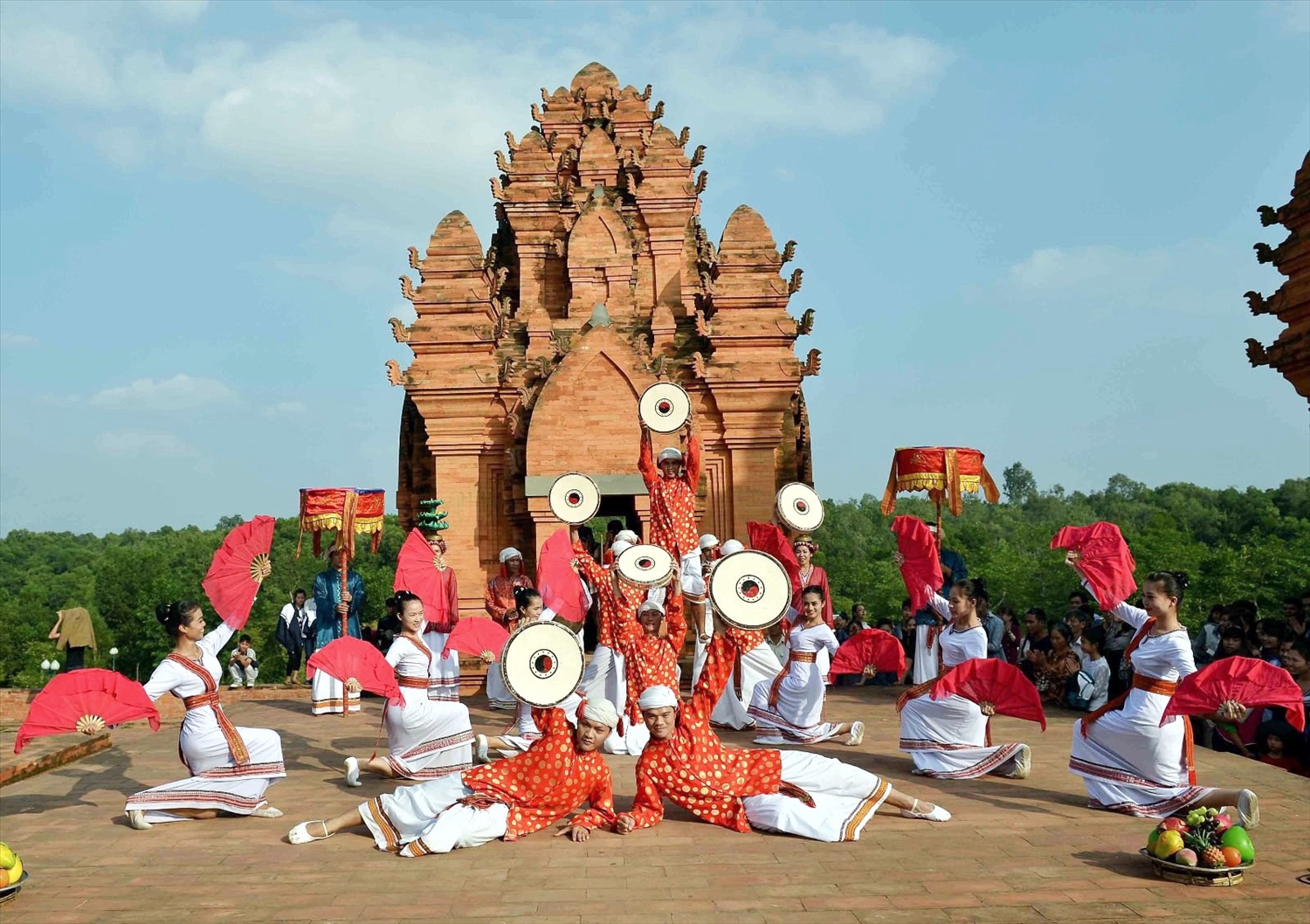
Rooted in the reverence for ancestors, the Kate Festival involves prayers for favorable weather, abundant harvests, and the harmony of couples, as well as the prosperity of people and things. Despite the passage of many years, the Cham people faithfully reenact the Kate Festival, showcasing its vibrant colors and resonant sounds, preserving the original rituals intrinsic to Champa culture.
Traditional rituals during the ceremony, such as opening the tower door, bathing the Linga-Yoni altar, and presenting main offerings, highlight the majestic beauty of Cham temples, pagodas, and towers.
Rituals and Activities during Kate Festival
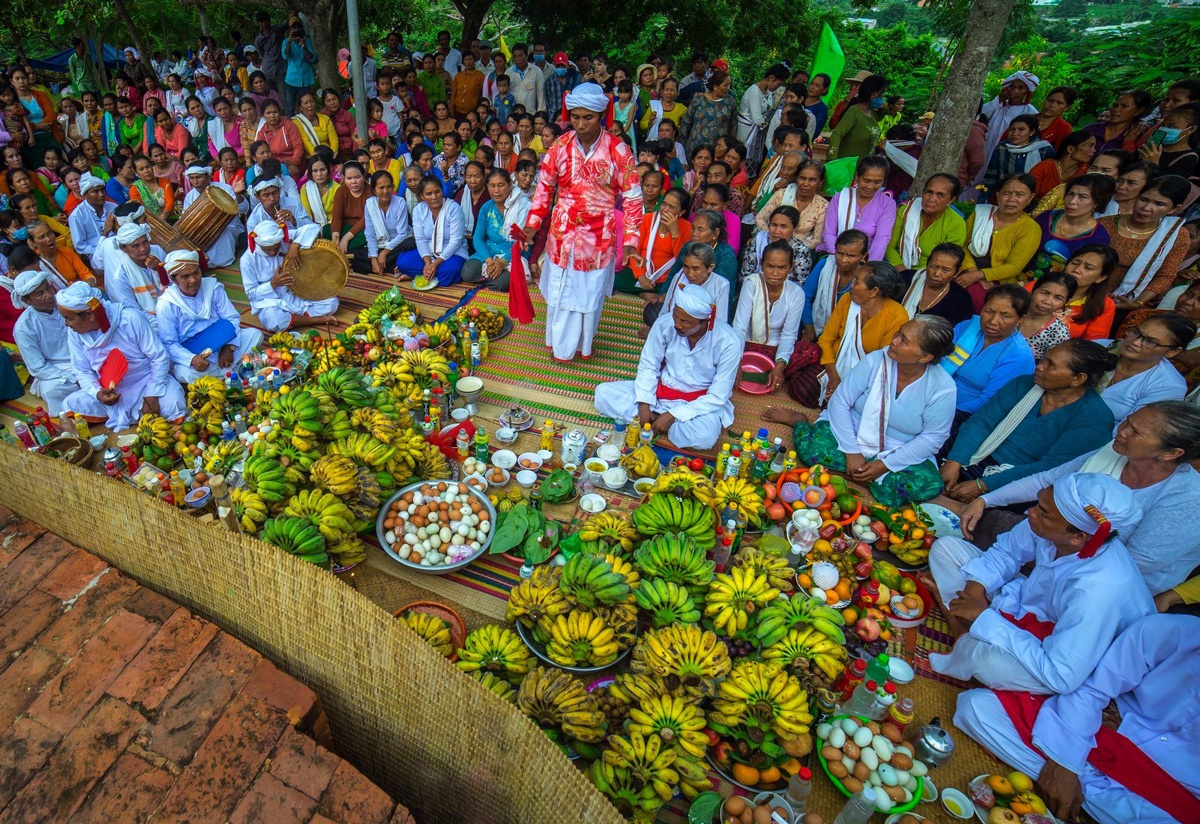
The Ceremony segment seamlessly intertwines with the Festival section, featuring demonstrations of brocade weaving, manual pottery making, and folk games infused with Cham cultural nuances. These include water team competitions, record drum battles, and gingerbread making contests.
The unique Biyen and Marai dances performed by graceful and agile Cham girls harmonize with the lively Baranung drums and the melodious Saranai trumpet, providing visitors with a comprehensive glimpse of the distinctive Cham culture.
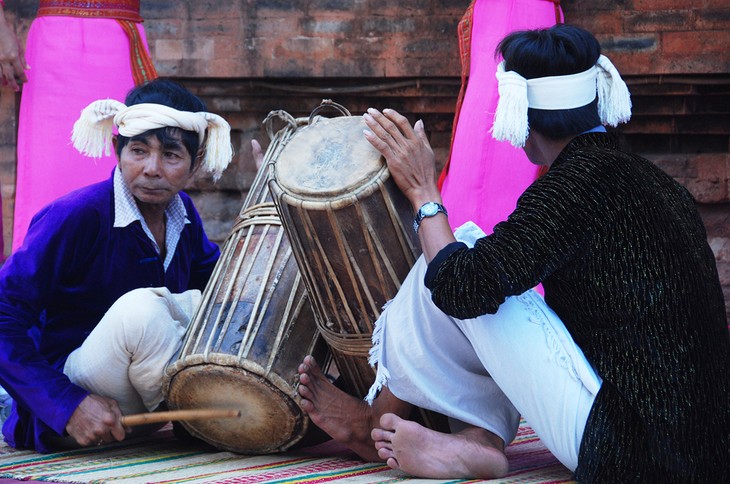
Central to the Kate Festival is its connection to the Balamon religion in Binh Thuan province, serving as a commemoration of deities such as Ppo Klaung Girai and Ppo Rome. The festival becomes a poignant opportunity for Cham people nationwide to return to their ancestral homeland, reuniting with family, friends, and clans. Kate Tet unfolds across a vast space, beginning at temples and towers and extending to villages, clans, and finally, individual families.
During these festivities, Cham villages and hamlets come alive with vibrant activity. Each house is meticulously prepared to welcome Kate Tet, and the entire village buzzes with folk games, sports, and cultural exchanges among Cham youth. As the village celebration concludes, the Kate ceremony transitions to Cham clans and families. Entire family units gather to pray for ancestral blessings, seeking good fortune for their children and grandchildren in life.
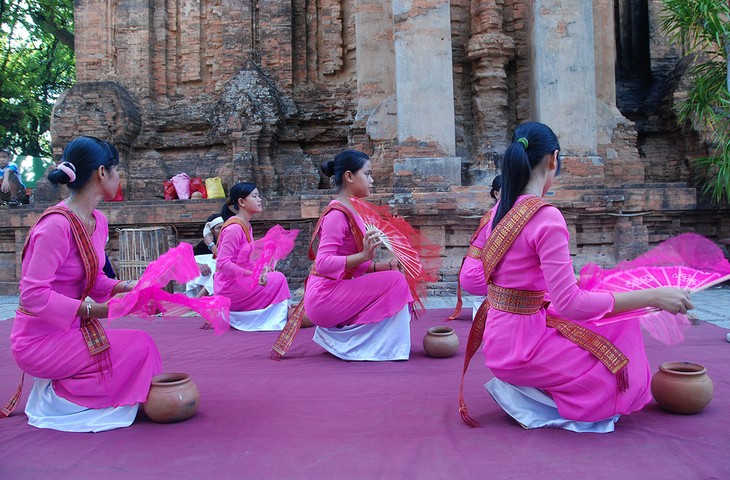
In conjunction with the Kate festival, the Binh Thuan Cham Cultural Exhibition Center orchestrates a series of cultural and artistic activities steeped in cultural identity. These activities cater to both Cham people and tourists, offering an immersive experience of Kate Tet.
The center also hosts cultural exchange programs and traditional Cham cultural competitions, including ensemble competitions for ethnic musical instruments, gingerbread making contests, and competitions for swiftly and beautifully writing traditional Cham characters.
More about Cham People in Vietnam
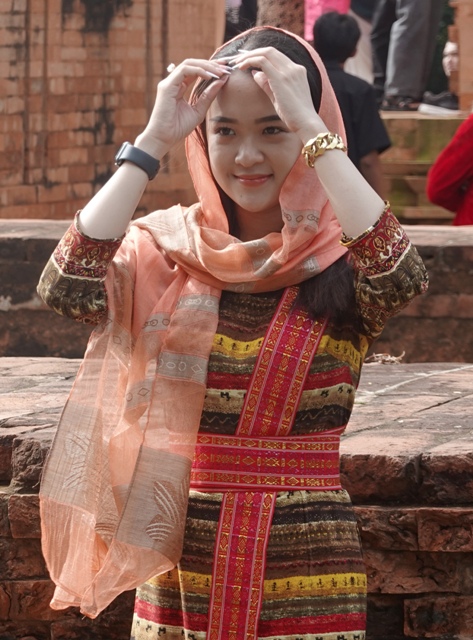
The Cham people, belonging to the Malay-Polynesian language group within the Austronesian language family, share linguistic ties with the Raglai, Ede, Chu Ru, and Gia Rai communities in Vietnam. Furthermore, the Cham people exhibit ethnic affinities with Indonesians, Malaysians, Bruneians, and others in Southeast Asia. Indigenous to the South Central Coast region, they have cultivated a vibrant culture shaped by the influence of Indian cultural elements.
Presently, the Cham ethnic group in Vietnam comprises over 160 thousand individuals, residing predominantly in the provinces of Ninh Thuan and Binh Thuan, with smaller populations in Phu Yen, Binh Dinh, An Giang, Tay Ninh, and Ho Chi Minh City. The Cham people consist of various local groups, each distinguished by unique religious, belief, and cultural characteristics. Cham villages dot the South Central Coast, situated near impressive cathedrals, ancient temples, or exclusively religious structures. The diversity arises from varying religious affiliations within these villages.
In Vietnam, the Cham people are categorized into four religious groups. The largest group, referred to as Cham Brahmanism, is now suggested by some scholars to be called Cham influenced by Brahmanism, or Hinduism. The second significant group is the Ba Ni Cham, representing the older Muslim Cham community. The third group, known as the new Muslim Cham or Cham Islam, practices orthodox Islam and is concentrated in An Giang, Tay Ninh, and Ho Chi Minh City. Finally, the Cham H’roi group, residing mainly in Binh Dinh and Phu Yen, follows primitive beliefs without adhering to any specific world religion.
The Cham Brahman and Ba Ni groups
The Cham Brahman and Ba Ni groups predominantly inhabit Ninh Thuan and Binh Thuan provinces. The Cham Brahmins, followers of Hinduism, distinguish themselves as the original Cham or Ba Cham, while the Cham Ba Nis follow Islam, venerating Saint Ala and the angel Mohammed. However, the Islam practiced by the Cham Ba Ni people is characterized by deep localization, incorporating elements of folk beliefs and diverging from mainstream Islam.
The Cham Islam group
The Cham Islam group, also known as the new Cham Islam, primarily resides in An Giang, Tay Ninh, and Ho Chi Minh City. Originating from Cham people who migrated to Cambodia and later returned due to objective reasons, this group practices orthodox Islam and differs from the Cham Ba Ni group, which adheres to old Islam.
The Cham H’roi group
The Cham H’roi group, mainly located in Binh Dinh and Phu Yen, remains uninfluenced by any organized religion, following primitive beliefs. This group shares many cultural similarities with the neighboring Ba Na and Ede people.
Religious differences among the Cham groups result in variations in culture, customs, and social practices, contributing to the overall richness and diversity of Cham culture in Vietnam.
Conclusion for Kate Festival
Kate Festival is one of 5 unique festivals of Binh Thuan province included in the List of Typical Local Festivals that need to be preserved and promoted for tourism development. In 2022, the Kate Festival was included in the National Intangible Cultural Heritage List. People traveling to Vietnam in October and staying at Binh Thuan Province (Mui Ne Beach) will have the opportunity to assist to the famous Kate Festival of Cham people. Check with Vietnam Travel Guide for specific schedules.

